Zeinab Masri| Saleh Malas| Nour al-Deen Ramadan
Weeks have passed since countries worldwide started COVID-19 vaccination campaigns, administrating to the public one type or the other of the vaccine varieties developed so far. In Syria, vaccination efforts have been locked in a limbo of official statements.
Besides talking about negotiations and discussions held to provide the vaccine, the regime’s vaccination plans have materialized in nothing but contradictory speculations of the vaccine’s arrival time in Syria in 2021.
Other statements were made by Syrian opposition officials, who stressed that the opposition refuses to be delivered the vaccine through regime-held territories.
In the areas of the Autonomous Administration of North and East Syria (AANES), the situation is no better. Officials there have also made statements about negotiations but not the mechanisms followed to administrate the vaccine to the area. Such mechanisms remain unaddressed and unclear.
While neither of the three parties that share control over Syrian territories—the Syrian regime government; the Syrian Interim Government, or the AANES—have declared the outcomes of the vaccine delivery negotiations with the World Health Organization (WHO), COVAX, a WHO affiliated facility, announced that it has designated Syria on its list of COVID-19 vaccine recipient countries.
COVAX too did not report the exact date of delivery.
In this lengthy article, Enab Baladi provides information obtained from the WHO on the mechanism to be adopted to ensure “fair” distribution of the vaccine, once it is delivered, to all Syrian regions, regardless of the forces holding reins of power in the target areas.
Discussed also is whether the parties in control are likely to use the vaccine as a tool to establish their political legitimacy, or not?
Secret immunization services in regime-held areas
As soon as the Chinese ambassador to Syria announced his country’s intention to deliver the regime’s government doses of the COVID-19 vaccine, Syrian social media users started posting photos of the “appointment card for the second dose.”
The card, bearing the name of the regime’s Ministry of Health, demonstrates that the holder has received the first dose on 6 February, with the second dose scheduled for the 27th of the same month.
However, the regime’s officials have not announced the arrival of any COVID-19 vaccines into regime-held areas, nor the start of the vaccination process.
On 4 February, the Chinese Ambassador to Syria, Feng Biao, stated that 150,000 doses of the COVID-19 vaccine have been delivered to Syria in aid to the regime’s government, the pro-regime al-Watan newspaper reported.
The Chinese ambassador did not name the vaccine type delivered to Syria, given that two local formulas are in use in Chania— Sinopharm, approved in December 2020, and CoronaVac, approved on 6 February 2021.
Requesting that her name be withheld for security concerns, a nurse from the Damascus-based Assad University Hospital ensured that the inoculation card is not fake.
The government of the Syrian regime has been delivered 60 doses, the nurse told Enab Baladi. But she could not tell for sure which of the vaccine formulas these doses were, “because the health professionals at the hospital were quite discreet about the matter.”
“The health ministry has been registering the names of the health staffers, working within its departments, who are to be immunized. These were told that immunization is optional, not obligatory. The immunization will take place at the al-Fayhaa Sporting City,” the nurse added.
Syria is expecting an allocation of the AstraZeneca vaccine, developed by Oxford University, because it does not have the facilities to keep Pfizer vaccines in the deep freeze necessary to preserve them.
Not only China: COVAX to provide Syria with a million doses
According to the COVAX Facility: Interim Distribution Forecast, published on 3 February, Syria is listed as one of the countries to be allocated doses of the AstraZeneca-Oxford vaccine.
The forecast contains an indicative distribution of 240 million doses of the vaccines, with Syria’s share amounting to 1,20,000 doses.
This indicative distribution “is intended to provide interim guidance to Facility participants – offering a planning scenario to enable preparations for the final allocation of the number of doses each participant will receive in the first rounds of vaccine distribution.”
Because the indicative distribution “is based on current communication of estimated availability from manufacturers. . . it is likely the distribution may need to be adjusted in light of circumstances that are difficult to anticipate and variables that are constantly evolving.” The reason why the number of doses listed within the document is “non-binding and may be subject to change.”
COVAX, in the document, stressed that the indicative distribution has been published “to mark first step in providing governments and public health leaders with the information they need to put in place practical steps for the provision of early doses and a successful national roll out of vaccines.”
This comes amid calls from UN officials to speed up the vaccine process and from human rights organizations that an “equitable” distribution must be ensured.
On Twitter, the Deputy Regional Coordinator of the United Nations, Mark Katz, urged for accelerating the vaccination process, not only in wealthy countries but everywhere, including in countries like Syria.
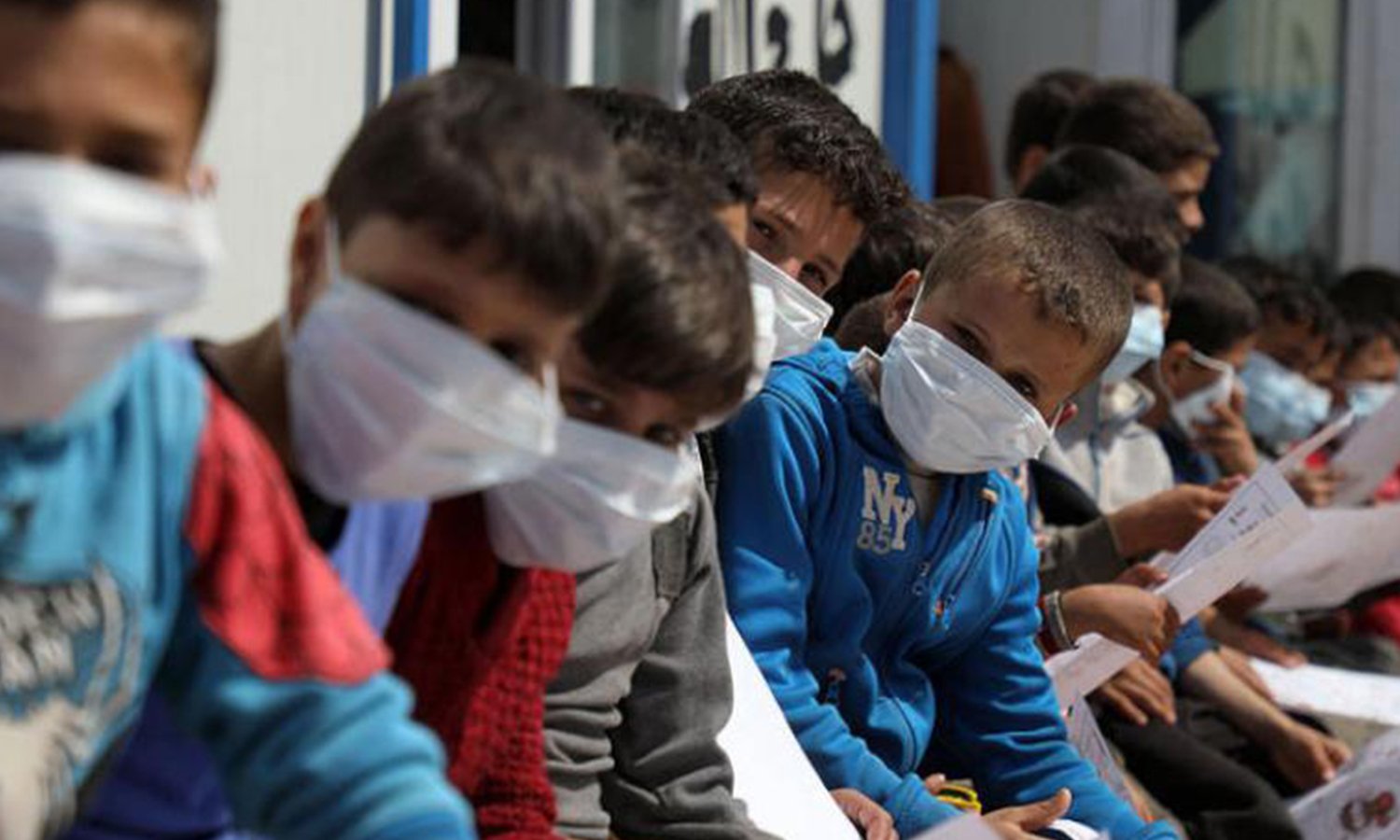
Displaced children in northern Syria being trained on COVID-19 preventative measures – 18 March 2020 (AFP)
Would WHO count China-donated doses?
“COVAX has sent an intent to initially allocate the AstraZeneca SII vaccine for Syria under the first phase of vaccination. This is subject to AZ SII approval and its inclusion in the WHO Emergency Use List (EUL),” Head of Mission and WHO Representative in Syria, Akjemal Magtymova, told Enab Baladi.
“The SAGE (Strategic Advisory Group of Experts) has reviewed the dossier and made recommendations and the final decision is yet to come,” she added.
Asked whether the WHO will count Chinese doses delivered to Syria upon determining the number of doses to be allocated to Syria, or not, Magtymova said: “WHO recognizes the countries liberty of making efforts for diversifying COVID-19 vaccines and their availability for their populations, based on safety and efficacy protocols and national regulations.”
“It is the national authority which acquires vaccines under the agreement with COVAX.”
This indicates that the COVAX allocations’ will not be affected by doses donated by other suppliers and that the WHO will meet the regime’s requirements in line with its own protocols and regulations.
| COVAX explained
The COVAX Facility is founded by the WHO to provide lower-income countries with equitable access to the vaccine, including Syria. The initiative brings together donor governments, which are already investing in the vaccine development; testing; and distribution processes. When approved, the initiative aims to make the vaccine available for countries that cannot afford its costs. On 26 January, Prime Minister of the Regime’s government, Hussein Arnous, announced the regime’s approval to join the COVAX Facility. |
“All Syrian population settlements” are on WHO’s vaccine map
In all three Syrian territories of control, positive COVID-19 cases have taken an upward trajectory, particularly as the second wave peaked in Syria in December 2020.
It remains difficult to hold the peak at a certain number of cases because infections might decline, only to spike again. Infection rates are related to several factors, most notably the Syrian healthcare sector’s ability to track new positive cases.
Nearly 90% of the populations of 70 poor countries might not receive any of the COVID-19 vaccines in 2021. Wealthier countries, however, have signed contracts to purchase doses sufficient to immunize citizens three times. Canada has even signed similar contracts to purchase vaccine amounts enough to vaccinate citizens five times, Amnesty International reported.
Commenting on the situation in Syria, Human Rights Watch expressed concern that COVID-19 vaccines might not be accessible to most vulnerable groups no matters where they are in the country and an equitable distribution plan might not be put in place to ensure healthcare capable of challenging the virus across Syria, including all areas controlled by different groups.
Over the course of several health-related crises, the Syrian regime has denied populations in opposition-held areas access to food, medications, and vital assistance, using these as a “weapon of war,” Human Rights Watch said. “But playing this game with the vaccine undermines the global effort to control the pandemic.”
Equitable distribution pumps against different reality
“The COVAX Facility has been found to ensure fair and equitable distribution of vaccines across the globe,” the WHO office in Damascus said, responding to a request for answers from Enab Baladi.
“WHO supports public health programmes across all areas and population groups,” with plans for COVID-19 vaccine introduction in an operationalized manner throughout the country.
The WHO will administrate the vaccines through selected public health facilities and mobile teams and via trained health facility teams, the office added.
The distribution plan covers both formal and informal settlements of internally displaced Syrians, the office added.
As for the target groups, the office said that “microplans will equally cover the population of camps across NES and NW. The first batch of vaccines will target eligible high-risk health workforce and frontline humanitarian workers, regardless of the location.”
To carry out cross-line operations, including vaccine and medical aid distribution, UN agencies have to seek the Syrian regime’s permission for every delivery, project, or convoy to move from areas held by the regime to those held by other armed groups, Human Rights Watch said in a February report.
The government of the Syrian regime has repeatedly either withheld or delayed such permissions, preventing the delivery of medical and other supplies to areas outside its control. The regime’s government has also hampered several UN agencies from implementing essential projects in the said areas. For instance, the regime’s government has refused to “allow UN agencies to establish Covid-19 testing labs in northeast Syria,” Human Rights Watch added.

Paramedic taking a child’s temperature within COVID-19 preventive measures in Azaz city, northern countryside of Aleppo —11 March 2020 (Reuters)
Health workers first:
Vaccines for a quarter of the population only
In her answer to Enab Baladi, Akjemal Magtymova, Head of Mission and WHO Representative in Syria, outlined the three phases of vaccine allocations and distribution plan in Syria. “COVAX envisages allocation of up to 20% of the Syrian population, free-of-charge, subject to global availability of safe and efficacious vaccines and their supplies by the manufacturers.”
Over the first phase, the vaccine batch will cover 3% of the population, which is mainly the health workforce and frontline workers who are likely to be in contact with COVID-19 cases.
In the second and third phases, the batches “adjusted as per quantities made available by COVAX,” will be administrated to high-risk populations, for example, the elderly population and those with co-morbidities, Magtymova added.
The information presented by Magtymova was emphasized by the Regional Director of SAMS Turkey, Mazen Kewara, saying that the current scope of the COVAX vaccination plan covers only 20% of the population across Syrian areas and regardless of the armed groups in control.
The said 20% of the population, the worldwide prioritized group, includes health professionals and workers, amounting to 3%, above-60 years old elderly, constituting 12%, 20-60 years old persons with co-morbidities, the remaining 5%.
The three-phase distribution is to start at the end of the first third of 2021. The first delivered doses will be used to immunize workers, nurses, and doctors, as well as other staffers across the healthcare sector.
In northwestern Syria, the WHO is cooperating with the Syrian Immunization Team—an alliance of the health organizations operating in the region, which have been carrying out all vaccination campaigns for the past three years, including polio and measles vaccination drives, Dr. Kewara said.
The team is also to handle the COVID-19 vaccine distribution in the area, enforcing a specific protocol that coordinates the activity of all organizations in northwestern Syria. The protocol will ensure that the first phase of vaccination, targeting health sector workers, will proceed smoothly and efficiently, Dr. Kewara added.
Likely supply lines
The routes through which the vaccines will be delivered to Syrian territories controlled by different authorities are still undefined. However, Dr. Kewara said that vaccines are most likely to arrive in regime-held areas through the WHO and UNICEF affiliated offices in Damascus.
As for the northwestern areas, he added, vaccines will mostly be delivered through the two organizations’ offices in the Turkish city of Gaziantep, on the border with Syria, or through offices concerned with cross-border operations.
Dr. Kewara said pressure will be made so that the areas in northeastern Syria, controlled by the Autonomous Administration, be delivered the vaccine through the Damascus-based offices of the WHO and UNICEF. Vaccines will probably be transported through border routes as well.
For her part, Dr. Akjemal Magtymova, said that “WHO will support the transport of the vaccines across Syria and coordinate the mobile activities on the ground with different stakeholders, based on the existing operations.”
Authorized vaccines and infrastructure
“The implementation across the country will follow the current experience of the Expanded Programme for Immunization (EPI) microplanning through the fixed facilities (hospitals and PHC centres) and mobile teams,” Magtymova added.
In regime-held areas
WHO and UNICEF are working closely with the Ministry of Health concerning the cold chain storage capacity. The regime chooses to acquire vaccines that could be stored at a regular cold-chain temperature of +2 to +8.
The COVAX Facility will only supply vaccines that have been pre-authorized by the WHO under the Emergency Use List (EUL) to ensure standards of safety and efficacy.
Currently, only two vaccines have been authorized by WHO namely Pfizer-BioNTech and Moderna, both of which require a cold chain that is not feasible in Syria (-70 oC and -20 oC respectively), Magtymova said.
Given the existing cold chain and health system capacities, the government of the Syrian regime has opted for vaccines that can be stored under (+2 to +8 C) temperatures.
What about northeastern Syria?
“We have cold chains for the storage and transportation of traditional vaccines. The COVID-19 vaccine also will be handled as a traditional vaccine should a decision be made regarding the exact type to be delivered to [northwestern Syria],” Director of Vaccine Programs in Idlib, Dr. Rif’at Farhat, told Enab Baladi earlier.
COVID-19 vaccine as political legitimacy tool
Last January, the regime’s Minister of Health, Hassan al-Ghabbash, stated that the Government of Syria “will not accept to procure the vaccine at the expense of other matters relating to the Syrian citizen and Syrian sovereignty.”
Under this statement, it appears that any vaccine distribution plans are unlikely to cover the areas where the Syrian opposition is regnant.
The Syrian Interim Government’s Minister of Health, Dr. Maram al-Sheikh, said that the government’s position of providing the COVID-19 vaccine to northwestern Syria is clear.
“As opposition institutions, we claim the matter as our own responsibility. We are working hard on it. We have institutions with the technical and logistic capabilities, necessary for managing this file,” he told Enab Baladi.
Accordingly, there will not be a cooperation between the health institutions in northwestern Syria and counterparts operated by the government of the Syrian regime.
Crises and challenges, of all sorts, are used by the regime as a card to press its opponents and establish its political legitimacy in front of the international community, regardless of the extent of humanitarian risks these crises pose, al-Sheikh said.
The COVID-19 vaccine distribution talks correspond to the approaching presidential elections in Syria, slated for next April. This is an opportunity that the regime will use to consolidate its political status, he added.
This the regime will do through promoting itself as the only party capable of permitting entry of medical, humanitarian, and relief aid to Syria. Any aid, no matter how feasible or effective, would be considered illegal if delivered through border areas that the Syrian opposition controls.
“Revolutionary civil institutions have proven that they are able to be an alternative to them, [Syrian regime’s institutions], in managing humanitarian crises in front of the international community,” al-Sheikh said, noting that coordination to provide COVD-19 vaccine by the WHO to northwestern Syria must be framed by joint cooperation, based on an official request applied to the COVAX Facility.
The Head of the Syrian Opposition Coalition, Naser al-Hariri, said in December 2020 that the coalition is working to secure COVID-19 vaccines, considering “the high risks posed by COVID-19 in the liberated areas, given the acute shortage of health professionals, and the health facilities decimated by the regime and its allies.”
In northwestern Syria, where the opposition predominates, the healthcare sector is run by several healthcare directorates. These entities are either independent, such as the Idlib Healthcare Directorate, or affiliated to the health ministries of the Salvation and the Interim governments.
However, they all have one common dilemma. They are local de facto administrative bodies—unrecognized by the international community legally or politically. Accordingly, their areas of action are not a priority in terms of COVID-19 vaccine assistance.
In the northeastern parts of Syria, where the Autonomous Administration holds reins to power, vaccine-related negotiations are also underway, particularly since the region is allowed access to aid deliveries exclusively through the Syrian regime’s areas after the al-Ya’rubiyah Border Crossing with Iraq was shut down in early 2020.
“The Healthcare Authority is holding talks with the WHO regarding possible delivery of the COVID-19 vaccine to areas in north and east Syria,” the Autonomous Administration stated on its official Facebook page on 28 December 2020, quoting Dr. Joan Mustafa, the head of the authority.
The lack of medicines, the lack of ambulance services, and a shortage of health workers posed a barrier to accessing healthcare in all communities assessed by the REACH initiative, as listed by its report on the humanitarian situation in northeastern Syria of November 2020.
The initiative pointed at a disconnect between reported needs and types of assistance perceived to be provided, whereby the assistance provided was not relevant to all needs of households in over half of communities where access to assistance was reported.
if you think the article contain wrong information or you have additional details Send Correction
النسخة العربية من المقال
-
Follow us :












 Novel Coronavirus (COVID-19) vaccine jab (Edited by Enab Baladi)
Novel Coronavirus (COVID-19) vaccine jab (Edited by Enab Baladi)





 A
A
A
A
A
A



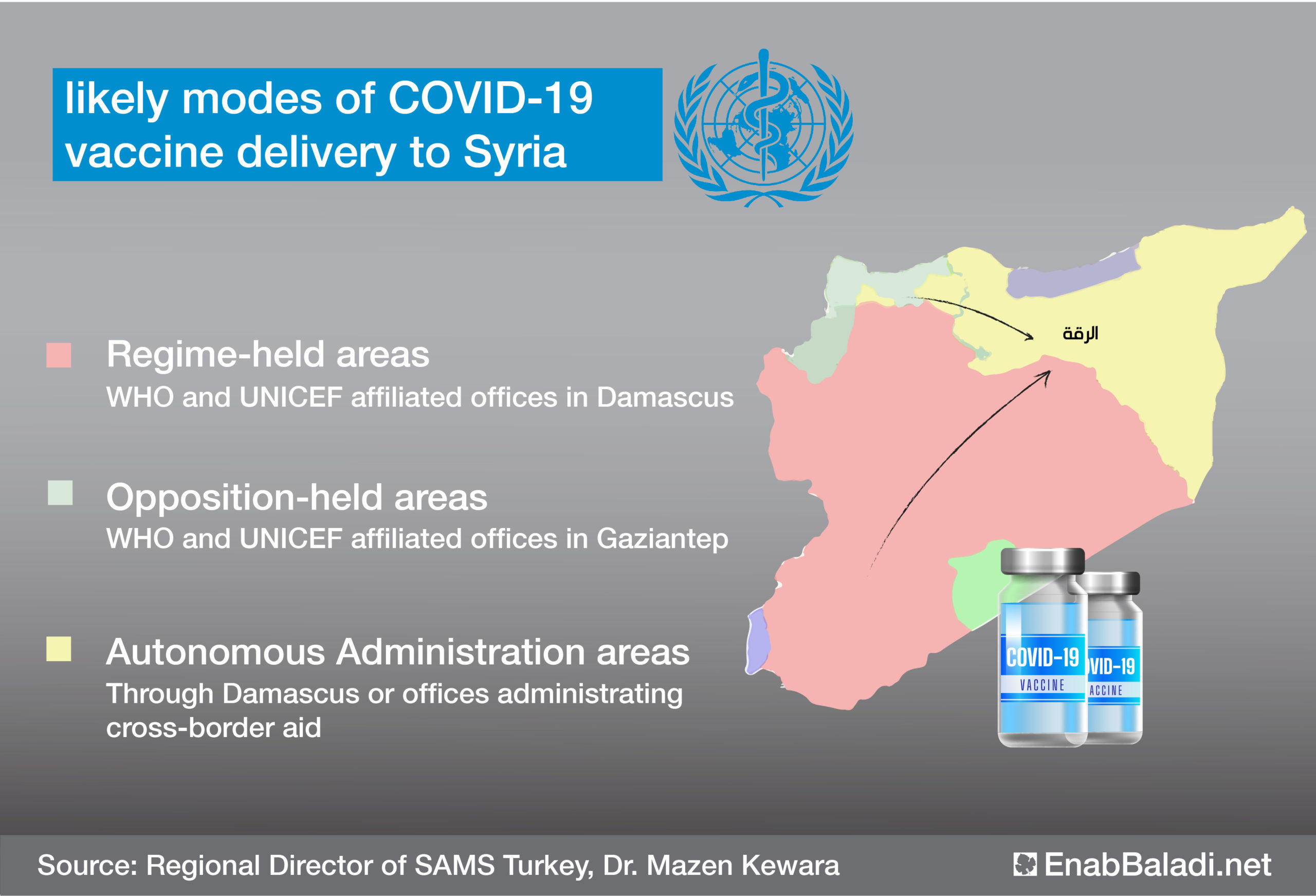




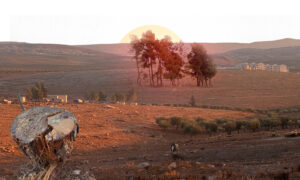
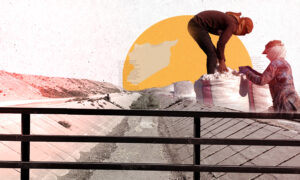

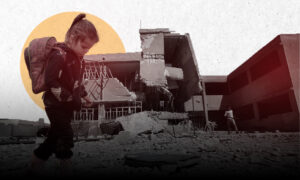
 More In-Depth
More In-Depth